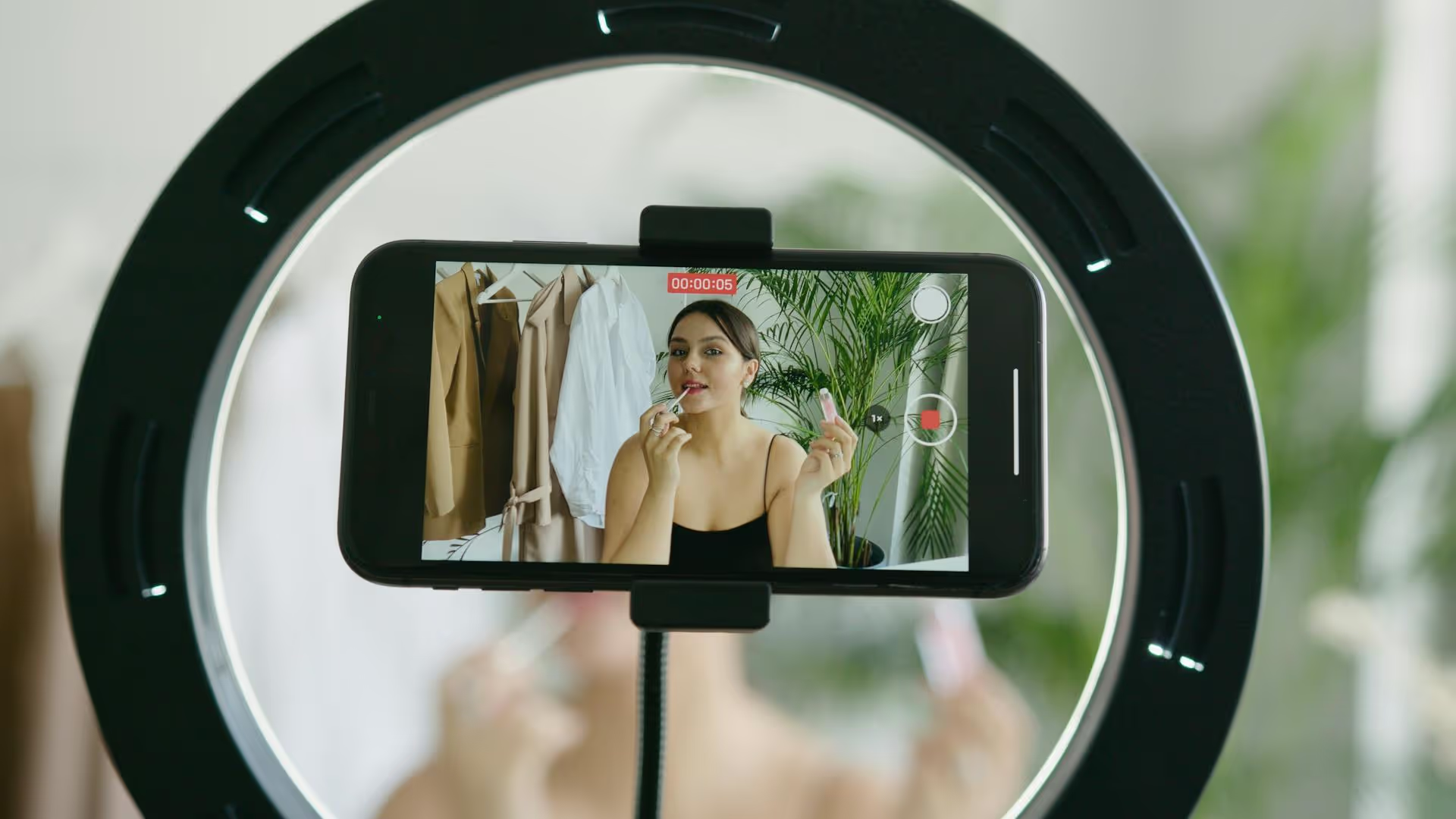How to Add Social Media Icons to an Email Signature
Enhance your email signature by adding social media icons. Discover step-by-step instructions to turn every email into a powerful marketing tool.

Creating a reaction video is one of the smartest ways to tap into popular trends, engage a bigger audience, and show off your personality on Instagram. Done right, they feel authentic and relatable, turning passive scrollers into active followers. This guide will walk you through exactly how to make, edit, and post a compelling reaction video, from the simple, built-in methods to the more advanced techniques that give you full creative control.
A reaction video is pretty much what it sounds like: a video of you reacting to another piece of content. On Instagram, this usually takes the form of a Reel where your video appears alongside or superimposed on the video you're reacting to. Think of it as sharing a moment with your audience - they get to see something for the "first time" right along with you.
The magic of these videos lies in raw human emotion. They work because:
Before you hit record, a little bit of preparation goes a long way. Setting yourself up for success a few minutes beforehand will make the entire creation process smoother and result in a much better-looking video.
The video you choose is the foundation of your reaction. Look for content that will evoke a strong, genuine emotion. Great candidates include:
A quick note on using other people's content: always, always give credit. The best practice is to tag the original creator in your caption and, if possible, on the video itself. While reaction videos often fall under 'Fair Use', crediting the creator isn't just good internet etiquette - it can also help your video get more visibility if the original creator engages with or shares it.
You don't need a professional studio, but you do need to control your environment. Pay attention to three things:
There are a few ways to create your reaction video, ranging from incredibly simple to having total professional control. Choose the method that best fits your comfort level and the time you have available.
Remix is Instagram's built-in tool for creating reaction and collaboration videos. It's perfect for jumping on trends quickly without ever leaving the app.
Step-by-Step Guide:
Pros: Fast, easy, and automatically links back to the original video, so crediting the creator is handled for you.
Cons: You have very little editing control over the final layout, size, and timing compared to using an external app.
If for some reason a video isn't available to Remix, this is an old-school workaround that still works in a pinch. You literally use one device to play the video you're reacting to and a second device to record yourself watching it.
Step-by-Step Guide:
This method gives you complete creative freedom and produces the most professional-looking results. It involves screen-recording or downloading the original video, recording your reaction separately, and then combining them in an editing app like CapCut, VN Video Editor, or InShot.
Step-by-Step Guide:
This method takes more effort, but your ability to control every aspect - the size, timing, and placement of both videos - is unmatched.
Making the video is just the first step. You need to package it for success to get views and engagement.
Don't Script Your Reactions: The whole point is authenticity. It's okay to have some bullet points in mind, especially if you plan on talking, but allow your spontaneous emotions to shine through. Lean into it!
Emphasize Your Emotions: You're performing for an audience. Slightly exaggerate your disbelief, laughter, or shock to make it more entertaining to watch. Nodding along silently doesn't make for an interesting video.
Write a Powerful Hook: Your first two seconds are golden. Start your video with on-screen text like "You won't believe how this ends" or "My marketing brain just broke." This creates an immediate open loop that viewers will want to see closed.
Use Smart Captions and Hashtags: Your caption should add context and ask a question to encourage comments. Use a mix of relevant hashtags, including broad ones (#reactionvideo), niche ones related to the video's topic (#marketingfails, #bakingtips), and creator-specific tags.
Whether you use Instagram's simple Remix feature for a quick take or an external video editor for a polished final product, reaction videos are a powerful tool for any creator. They're a shortcut to building community by creating shared experiences and jumping on conversations already happening online.
As you start making more video content, you'll find that planning and scheduling are just as important as the creation itself. As social media managers and marketers ourselves, we built Postbase because we desperately needed a tool that was designed for today's video-first world. Our visual calendar makes it simple to plan your entire content schedule, while our reliable, video-native scheduler ensures your carefully edited Reels go live exactly when they're supposed to, every single time.
Enhance your email signature by adding social media icons. Discover step-by-step instructions to turn every email into a powerful marketing tool.
Learn how to add your Etsy link to Pinterest and drive traffic to your shop. Discover strategies to create converting pins and turn browsers into customers.
Grant access to your Facebook Business Manager securely. Follow our step-by-step guide to add users and assign permissions without sharing your password.
Record clear audio for Instagram Reels with this guide. Learn actionable steps to create professional-sounding audio, using just your phone or upgraded gear.
Add translations to Instagram posts and connect globally. Learn manual techniques and discover Instagram's automatic translation features in this guide.
Optimize your Facebook Business Page for growth and sales with strategic tweaks. Learn to engage your community, create captivating content, and refine strategies.
Wrestling with social media? It doesn’t have to be this hard. Plan your content, schedule posts, respond to comments, and analyze performance — all in one simple, easy-to-use tool.